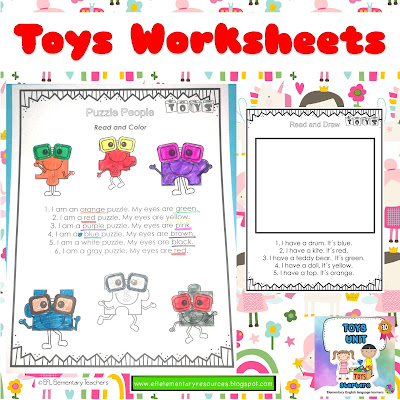Include graphing in
your lesson plan as a valuable teaching tool for your students to integrate
English and Math.
The resource is available here: https://www.teacherspayteachers.com/Product/Graphing-Worksheets-for-Elementary-English-Language-Learners-11309998

Graphing can be challenging for English learners because it requires students to understand questions, categories, and results — not just numbers. Many students can count but struggle to explain information using language. These graphing activities support both math understanding and English communication by helping students talk about data in simple, meaningful sentences. Check the video!
It will enhance the
understanding of mathematical concepts such as counting.
It will promote
language development,using speaking and listening. Students will express themselves orally to show their
opinion. Ask questions about the graphs
It will foster
critical thinking skills where the students will compare, contrast and draw
conclusions about the results.
It will provide an
engaging learning experience. It is an interactive activity. Students will
manipulate the data and interpret the results.
Show the visual
representation of the results on the board.
Adapt
the graph to the different students that you have in class.
Check these ideas:
The favorite toy worksheet can lead to
a speaking activity. They will draw their favorite toy and write a short text. When
all the worksheets are done, have the children walk around and find another
student or group of students with the same favorite toy. Stand together. Then,
graph the results.
Teacher: How many trains are the
favorite?
Students: two!
Graphing the favorite food. Do this one as a simple survey by placing the
options on the board, using the flashcards: pizza, hamburger, chicken, fries,
hot dog, salad. Create a bar graph on the board as they will come with their
worksheet and place it under their option bar. Tally the results.
Here is
another example with the pet unit to make a bar graph on the board, to add variety have the students
write sentences about the favorite pet winner, such as: The favorite pet is the dog.
I like dogs.
There is a
worksheet to do a pet ownership graph. Students will draw the pet they have at
home. Grap showing the number of students
who have dogs, cats, etc. And students with no pets at home.
The favorite room of the house can be
graphed, but add the variant of the color. Tell your students to color the room
of their choice. You will count the favorite room and the color as well.
Use
the number of rooms of the house worksheet to graph. Discuss with your students
that homes have different quantities of rooms. Graph by writing the numbers 1
to 5 for bedrooms basically which will vary in the resultsMake a list
of the school objects for the favorite items.
They have to choose from the list and draw on the worksheet. Do the graph as
survey. Each student will stand up with the worksheet and say: My favorite
worksheets is the pencil.
Create a
tally chart to record the number of votes for each school subject.
Give a
twist to the graph for the favorite color. Place colored balloons at several parts of the classroom.
After the students finish their favorite color worksheets. Have them find the
balloon of their favorite color and stand right there. Tally the results.
Graphing gives students a visual way to understand information while using real language. Instead of answering abstract questions, learners can point, count, compare, and explain results using simple English. This makes graphing an ideal activity for ESL classrooms.
When to Use Graphing Activities with beginner to low-intermediate ESL / EFL students
• After a vocabulary unit
• As a speaking review lesson
• During math + language integration
• For class surveys or opinion questions
• As a calm, structured lesson after active games
I hope you
include any of these graph ideas into your lesson plan. All the worksheets are included in each unit resource. All of them are in the BUNDLE:https://www.teacherspayteachers.com/Product/Elementary-English-Language-learners-teaching-Units-Starters-BUNDLE-11215540
If you have any other
graphing option, let me know! Just write a comment below.There are a
lot more ideas and resources to check at Pinterest. https://www.pinterest.com/ei98srl/esl-elementary-teachers-materials/







































































